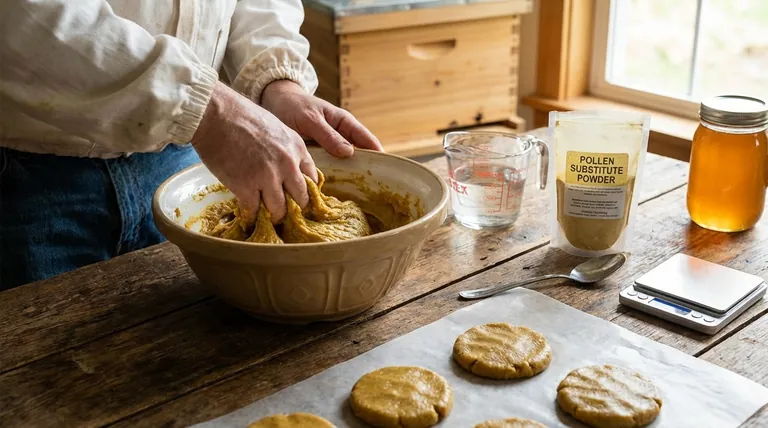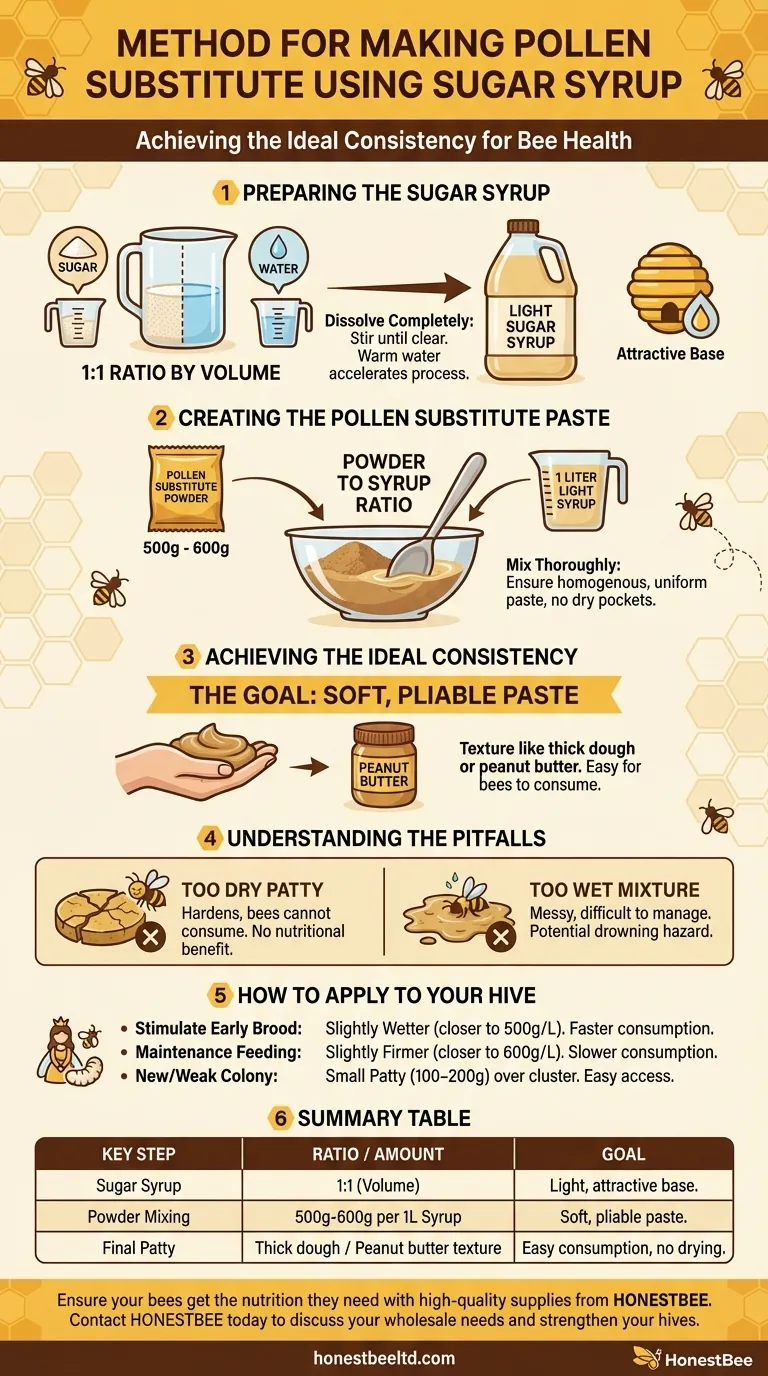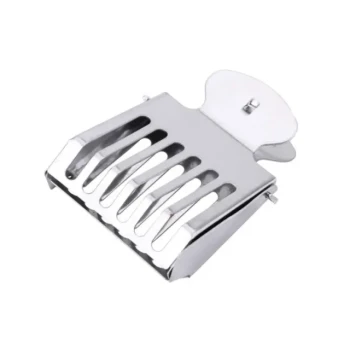To make a pollen substitute using sugar syrup, you must first create a light syrup by mixing equal volumes of granulated sugar and water. Once the sugar is fully dissolved, you will thoroughly mix 500 to 600 grams of pollen substitute powder into each liter of the syrup until it forms a consistent, soft paste.
The goal is not simply to follow a recipe, but to create a final product with the correct consistency. The paste must be soft enough for bees to consume easily and remain that way in the hive without drying out.

Preparing the Sugar Syrup
The foundation of a good pollen patty is a correctly prepared light sugar syrup. This syrup acts as the binder and a source of carbohydrates for the bees.
The Correct Ratio for Light Syrup
A light syrup is made using a 1:1 ratio of granulated sugar to water by volume. For example, you would mix one liter of sugar with one liter of water.
This ratio creates a syrup that is attractive to bees and has the right viscosity to properly hydrate the pollen substitute powder without making the final paste too sticky or runny.
The Dissolving Process
Ensure the sugar is completely dissolved in the water. Stir the mixture until the liquid is clear. Using warm water can speed up this process, but it is not essential as long as you achieve a fully dissolved solution.
Creating the Pollen Substitute Paste
With your syrup prepared, the next step is to incorporate the pollen substitute powder to create the final patty mixture.
The Critical Powder-to-Syrup Ratio
The standard formula is to add between 500g and 600g of pollen substitute powder to every one liter of light sugar syrup.
The exact amount within this range depends on the specific brand of powder and your desired final consistency. Starting with 500g and adding more as needed is a safe approach.
The Mixing Process
Combine the powder and syrup and mix them thoroughly. The objective is to ensure every particle of powder is hydrated, resulting in a homogenous, uniform paste with no dry pockets.
Achieving the Ideal Consistency
The final product should be a soft, pliable paste, similar in texture to thick dough or peanut butter. It should hold its shape but be soft enough to spread or flatten easily into a patty.
Understanding the Pitfalls
The consistency of the final paste is the most critical factor for success. Getting it wrong can render the supplement useless or even problematic for the hive.
The Danger of a Dry Patty
If the mixture is too dry or hard, the bees will be unable to consume it. The patty will sit in the hive, harden further, and provide no nutritional benefit. This is why the instruction to create a paste that "does not dry out quickly" is so important.
The Problem with a Wet Mixture
Conversely, if the paste is too wet or runny, it can be messy and difficult for bees to manage. In a worst-case scenario, very sticky or liquid feed can pose a drowning hazard to bees.
How to Apply This to Your Hive
Your goal as a beekeeper dictates how you prepare and use the pollen substitute.
- If your primary focus is stimulating early brood rearing: Use a slightly wetter paste (closer to the 500g per liter ratio) as it is generally more attractive and easier for the bees to consume quickly.
- If your primary focus is providing maintenance feeding during a dearth: A slightly firmer paste (closer to the 600g per liter ratio) can work well, as it will be consumed more slowly over a longer period.
- If you are feeding a new or weak colony: Start with a small patty (around 100-200g) placed directly over the cluster to prevent waste and ensure the bees can access it easily.
Ultimately, providing the correct supplemental nutrition is one of the most effective ways to ensure your colony's health and productivity.
Summary Table:
| Key Step | Ratio / Amount | Goal |
|---|---|---|
| Sugar Syrup | 1:1 sugar to water (by volume) | Creates a light, attractive syrup base |
| Powder Mixing | 500g - 600g powder per 1 liter syrup | Achieves a soft, pliable paste consistency |
| Final Patty | Texture like thick dough or peanut butter | Ensures easy consumption and prevents drying in the hive |
Ensure your bees get the nutrition they need with high-quality supplies from HONESTBEE.
We supply commercial apiaries and beekeeping equipment distributors with the reliable pollen substitute powders and other essential supplies required for successful supplemental feeding. Our wholesale-focused operations ensure you get the consistent quality and value your business depends on.
Contact HONESTBEE today to discuss your wholesale needs and strengthen your hives.
Visual Guide

Related Products
- Heavy Duty Stainless Steel Queen Bee Catcher Clip
- Thick PVC Material Waterproof Anti-Slip Wear-Resistant Bee Work Shoes Boots for Garden Outdoor Utility
- Oxalic Acid Vaporizer 12V for Bee Varroa Mite Treatment
- Circular Labyrinth Bee Escape for Efficient Hive Management
- Economy Manual Beeswax Embossing Mill Wax Foundation Machine Roller
People Also Ask
- Why do some beekeepers choose not to wear gloves? For superior dexterity and a calmer hive.
- Why are queen clipping scissors used? A Beekeeper's Guide to Swarm Control
- What are the considerations for using gloves in beekeeping? Balance Protection and Dexterity for Hive Success
- How do beekeeping gloves protect against stings? Essential Gear for Apiary Safety
- What is the function of queen clip catchers? Safely Handle Your Queen Bee












